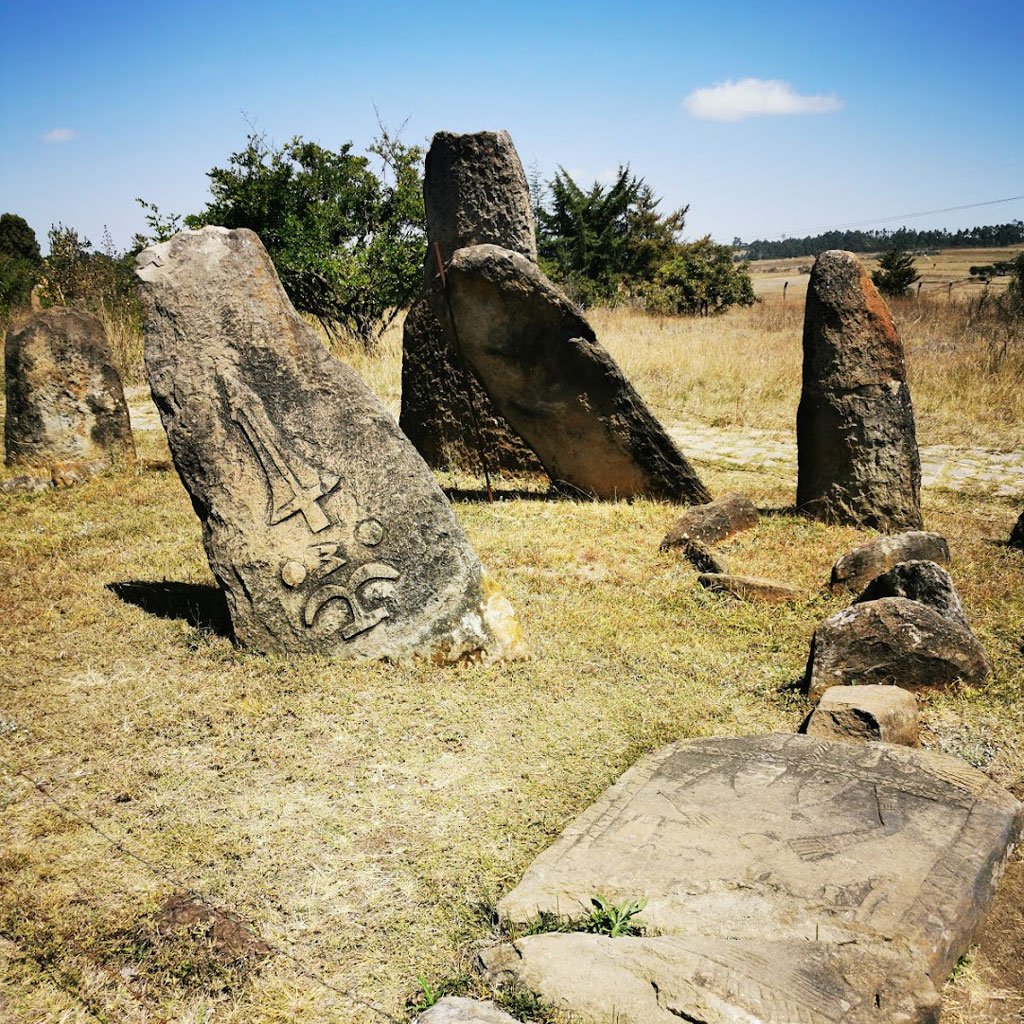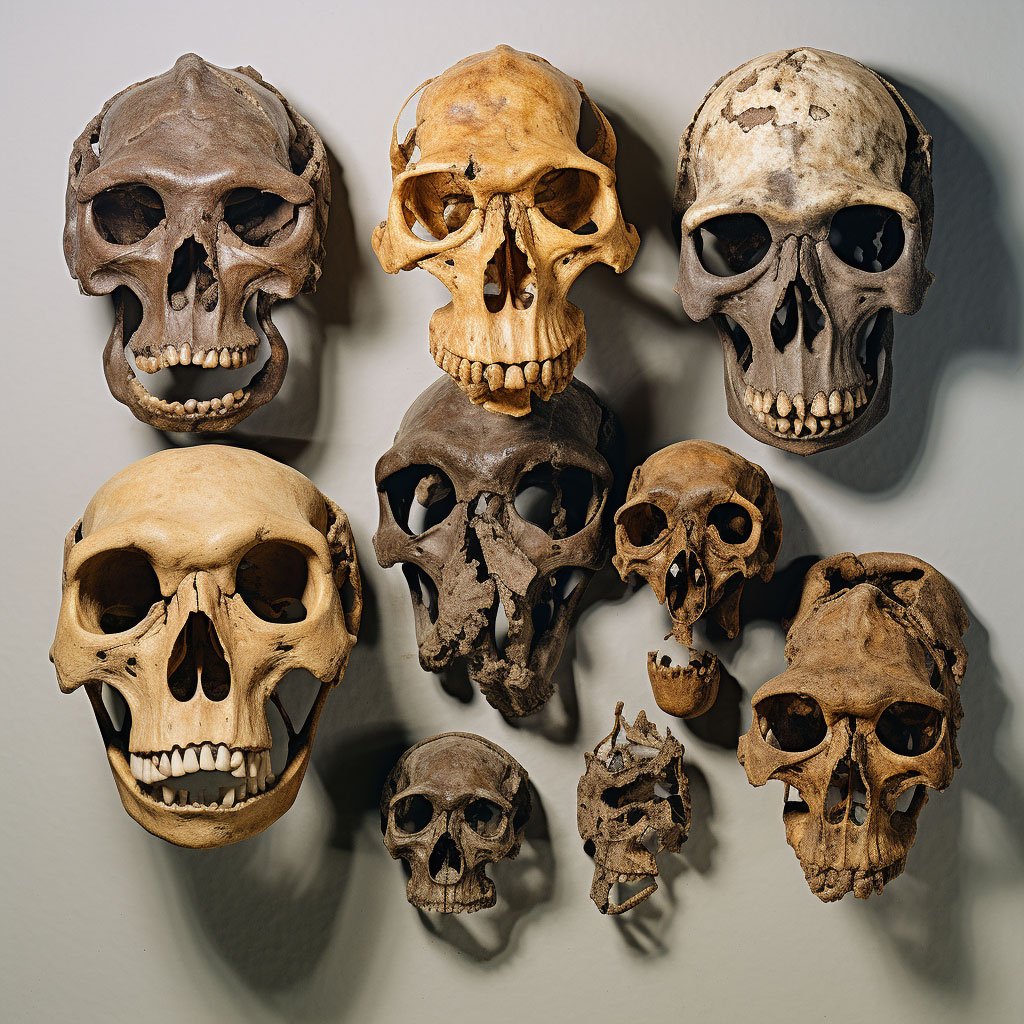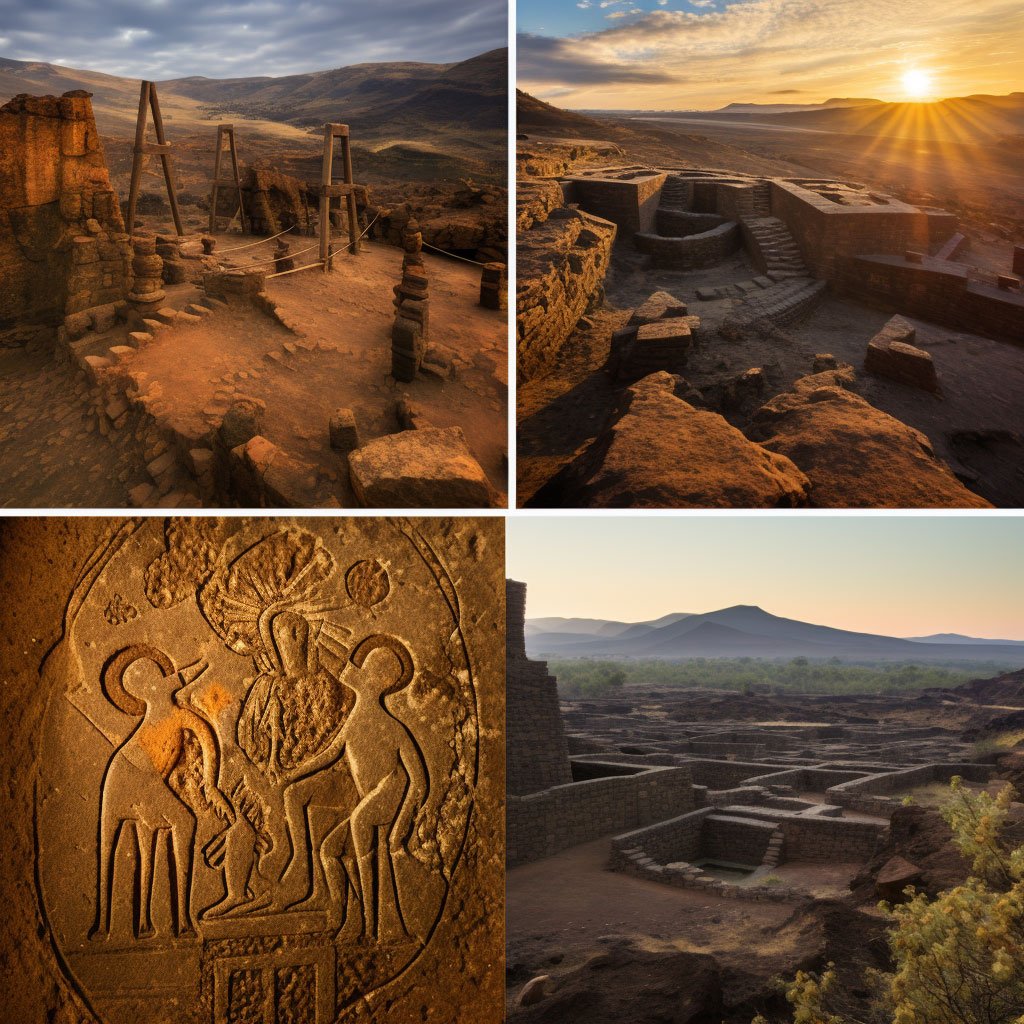Ethiopia, often referred to as the ‘Cradle of Humanity,’ is a country that boasts a rich and diverse archaeological heritage. With its ancient archaeological sites, prehistoric fossils, and mysterious stone monuments, Ethiopia offers a window into the past that is as fascinating as it is informative. This article will take you on a journey through the archaeological landscape of Ethiopia, exploring famous sites like the Tiya stones and the Lower Valley of the Awash, where the famous early human ancestor, Lucy, was discovered.

The Tiya Stones: A Mysterious Legacy
Our archaeological exploration begins with the Tiya stones, one of Ethiopia’s most enigmatic archaeological sites. Located in the Gurage Zone of the Southern Nations, Nationalities, and Peoples’ Region, the site is home to 36 standing stones or stelae, most of which are engraved with mysterious symbols.

Designated as a UNESCO World Heritage site, the Tiya stones are part of an archaeological site that covers an area of approximately 5 hectares. The stones, which vary in height from 1 to 5 meters, are believed to be ancient grave markers, dating back to somewhere between the 10th and 15th centuries AD. The symbols engraved on the stones, which include swords and other decorative motifs, remain a mystery, with archaeologists yet to decipher their meaning.
Visiting the Tiya stones offers a unique opportunity to delve into the mysteries of the past. The site, with its standing stones and enigmatic symbols, evokes a sense of wonder and curiosity. The Tiya stones, despite their mystery, offer valuable insights into the cultural practices and artistic expressions of the people who created them. The site, with its archaeological significance and cultural value, is a must-visit for anyone interested in history and archaeology.
The Lower Valley of the Awash: A Cradle of Humanity
Our archaeological journey continues in the Lower Valley of the Awash, a site of significant paleoanthropological importance. Located in the Afar region of northeastern Ethiopia, the Awash Valley has yielded numerous hominid fossils that have provided valuable insights into human evolution.

The most famous of these discoveries is “Lucy,” a 3.2 million-year-old Australopithecus afarensis fossil. Discovered in 1974 by a team of scientists led by Donald Johanson, Lucy is one of the oldest and most complete hominid skeletons ever found. The discovery of Lucy was a groundbreaking moment in the field of paleoanthropology, providing evidence that our ancestors were walking upright long before the development of large brains.
Visiting the Lower Valley of the Awash offers a unique opportunity to walk in the footsteps of our early ancestors. The site, with its rugged terrain and dry climate, evokes a sense of stepping back in time. The valley, with its rich fossil record, serves as a reminder of our shared human heritage and the long evolutionary journey that has shaped us as a species.
The National Museum of Ethiopia: A Treasure Trove of Fossils
A visit to the National Museum of Ethiopia in Addis Ababa is a must for anyone interested in archaeology and paleoanthropology. The museum houses a vast collection of hominid fossils, including a replica of Lucy. The original Lucy fossil, due to its immense scientific value, is kept in a specially constructed safe in the museum.

The museum’s paleoanthropological exhibit, which includes fossils from various stages of human evolution, offers a fascinating journey through time. The exhibit, with its informative displays and well-preserved fossils, provides a comprehensive overview of human evolution, making it a valuable educational resource for both students and the general public. The National Museum of Ethiopia, with its rich collection of fossils, is a testament to the country’s significant contribution to our understanding of human evolution.
The Significance of Archaeological Sites in Ethiopia
The archaeological sites in Ethiopia are more than just tourist attractions; they are windows into the past, offering valuable insights into human history and evolution. These sites, from the mysterious Tiya stones to the fossil-rich Awash Valley, are a testament to the country’s rich archaeological heritage.

The Tiya stones, with their enigmatic symbols, offer insights into the cultural practices and artistic expressions of the people who created them. The Lower Valley of the Awash, with its rich fossil record, has contributed significantly to our understanding of human evolution. These archaeological sites, through their historical and scientific value, contribute to the cultural richness and diversity of Ethiopia.
Conclusion: A Journey through Ethiopia’s Archaeological Wonders
Our journey through Ethiopia’s archaeological wonders, from the mysterious Tiya stones to the fossil-rich Awash Valley, has been an enlightening experience. The encounters with the country’s rich archaeological heritage, the exploration of ancient sites, and the immersion in the mysteries of the past, have offered a deeper understanding of Ethiopia’s historical landscape.

Ethiopia, with its diverse archaeological sites and rich paleoanthropological record, is a paradise for history enthusiasts and archaeologists. The opportunity to delve into the mysteries of the past, to walk in the footsteps of our early ancestors, and to witness the remnants of ancient cultures, is a unique experience that goes beyond the aesthetic. This journey has been a testament to the rich archaeological heritage of Ethiopia and a reminder of the significant role archaeology plays in understanding our past and shaping our future.
As we conclude our archaeological journey through Ethiopia, we carry with us not just the memories of ancient stones and fossils, but also a deeper appreciation for the archaeological treasures that tell the story of our shared human heritage. The archaeological traditions of Ethiopia, preserved and studied over generations, are a vibrant expression of the country’s cultural identity and a source of national pride.
